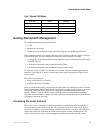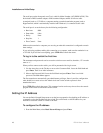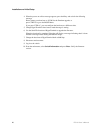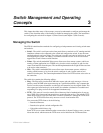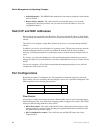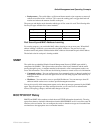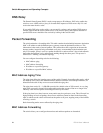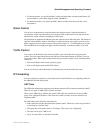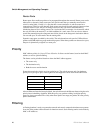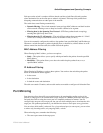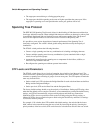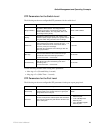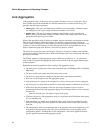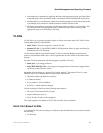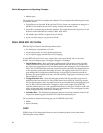ZT8101 User’s Manual 25
Switch Management and Operating Concepts
• For unicast packets, you specify the MAC address and then either select the port that they will
be forwarded to or have them dropped (called “BlackHole”).
• For multicast packets, you specify the MAC address and then select the ports they can be
forwarded to.
Storm Control
You can also set thresholds to control broadcast and multicast storms. When the threshold is
exceeded, the switch drops the multicast or broadcast traffic. When traffic levels drop below the
threshold, the switch resumes forwarding the traffic again.
The thresholds are applied to all Ethernet ports and cannot be set for individual ports. The threshold
specifies in thousands the number of broadcast or multicast packets per second a port can receive
before triggering a storm control response. The possible range is 0 — 255 KB packets per second.
This threshold can be configured to apply to broadcast packets, to multicast packets, or to both.
Traffic Control
You can also set thresholds for the amount of traffic a port can handle before triggering flow
control. The flow control threshold sets the limit for the maximum amount of memory a port can
use to hold packets. When a port reaches this limit, the port sends a signal to slow down the packets
coming in:
• Ports in half-duplex mode assert a jamming signal.
• Ports in full-duplex mode send PAUSE frames.
You can set the flow control thresholds for individual ports and then monitor the status.
IP Forwarding
You can configure how packets are forwarded, based on their IP address, by configuring entries for
the ARP table and the routing table.
ARP Table
The ARP table maintains the mappings from Internet addresses (IP) to hardware addresses (MAC).
There are two types of ARP entries: dynamic and static.
When a static ARP entry is added to the switch’s ARP table, the switch does not send an ARP
query to the configured IP address. This allows the switch to connect to devices that have not
implement ARP.
The ARP table has the following characteristics:
• Static entries have higher precedence than dynamic entries. Therefore, a static entry will not be
overwritten by a dynamic entry.
• The aging time for dynamic entries is 20 minutes. This value is not configurable.
• The table can be up to 2 KB in size.
• Up to 32 static entries are allowed in the table.



